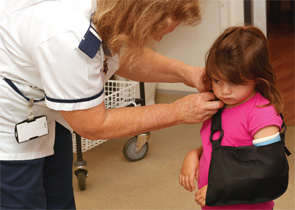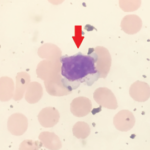
BOSTON—Children and adolescents with pediatric rheumatic diseases may be at increased risk for fractures and low bone-mass density, and rheumatologists should watch for signs of broken bones even in asymptomatic patients, an expert on pediatric rheumatic disease treatment told attendees at the ACR/ARHP Annual Meeting in Boston on Nov. 18, 2014.
Speaking on, Protecting Bone Health in Pediatric Rheumatic Diseases, Jon “Sandy” Burnham, MD, MSCE, clinical director of the Division of Rheumatology at the Children’s Hospital of Philadelphia, explored how bones develop and where problems may occur in kids in this patient population. Rheumatologists treating pediatric patients should appreciate the contributions of inflammation, glucocorticoid therapy and an altered body composition to lower bone mass and elevated fracture risk in this population, he said.
Careful monitoring, DXA and other imaging techniques, and bisphosphonates may help some pediatric rheumatic disease patients reduce fracture risk, Dr. Burnham said. Bisphosphonates are not FDA approved for use in pediatric patients, he noted.

Dr. Burnham began with the “cautionary tale” of one of his juvenile dermatomyositis patients, a 7-year-old girl who developed severe pain in her back and thigh two months after improving on her initial combination therapy, which included DMARDs and glucocorticoids. An MRI scan of her back revealed epidural lipomatosis and several vertebral compression fractures. Her steroids were tapered, and she was offered bisphosphonates, although her family initially rejected this treatment option, Dr. Burnham said.
Very Strong Structures
“Bones serve a variety of functions,” said Dr. Burnham. They are a bank for minerals, protect our internal organs and support our bodies’ movements with the minimum possible mass. “They are very strong structures. Even with the stupid risk-taking behaviors we all do as children, they really should not break.” Although most kids with rheumatic diseases will not experience a fracture, rheumatologists should watch for vertebral compression fractures even in patients who are asymptomatic, he said.
Several factors contribute to normal growth and skeletal development during childhood. Important bone boosters include normal nutrition, with recommended levels of vitamin D and calcium, and weight-bearing physical activity. “Bone adapts mechanical forces to maintain strain at a constant set point,” he said. Osteocytes sense the strain of activities and send effector signals that lead to the production of osteoblasts and osteoclasts, which regulate bone modeling.
Pediatric rheumatic disease patients face some unique challenges to healthy bone development, said Dr. Burnham.

